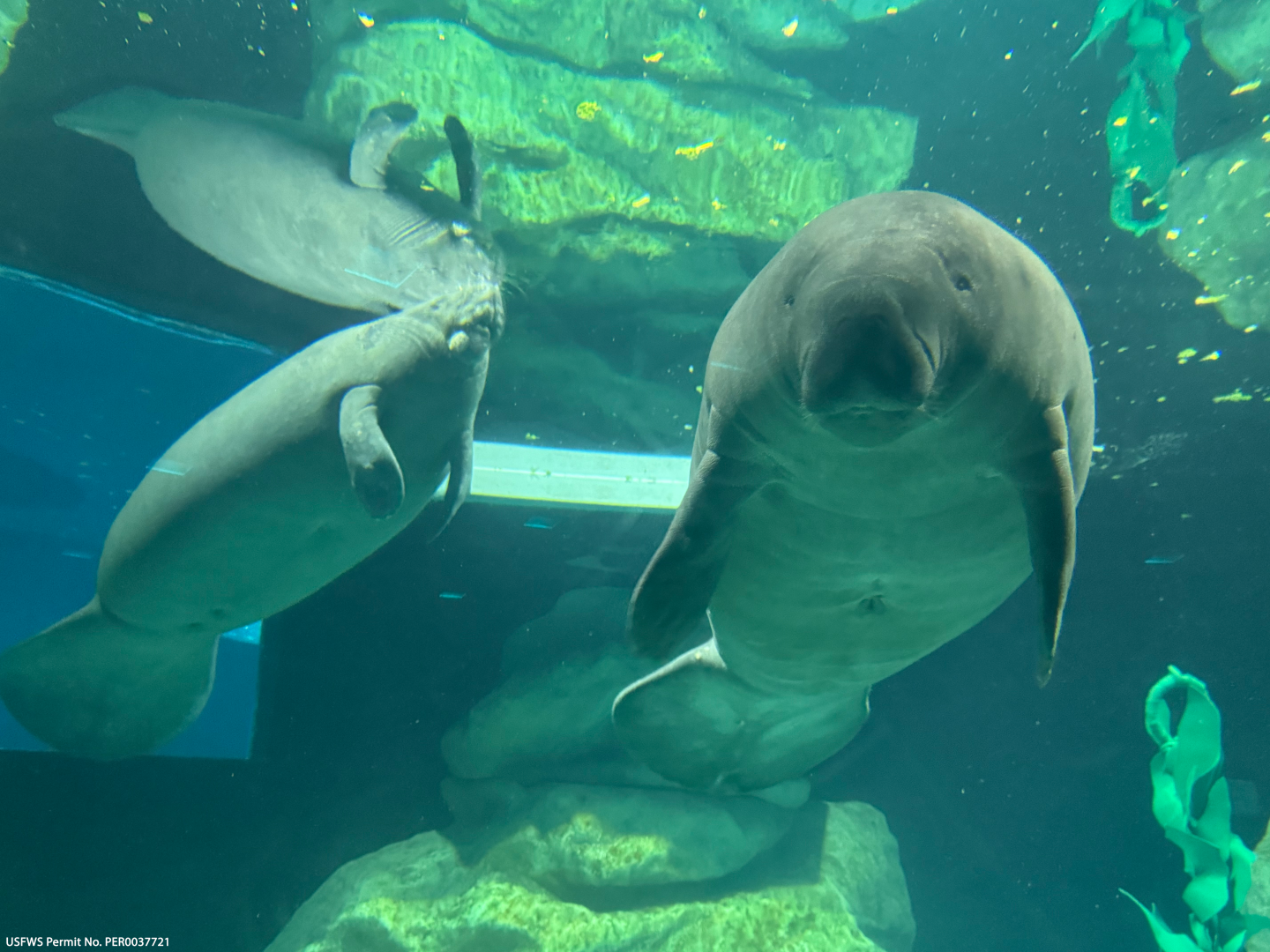For decades, Walt Disney World has provided extraordinary care for thousands of fish and marine mammals that have served as ambassadors for their species, inspiring us and aiding in conservation and research efforts. As we look to the future of The Seas with Nemo & Friends at EPCOT, we are making some changes by transitioning our focus to meet the growing need of Florida’s rescued manatees.
Continuing to focus on its role in manatee conservation and through its collaboration with the Manatee Rescue & Rehabilitation Partnership (MRP) and the U.S. Fish and Wildlife Service (FWS), Disney is transitioning from a long-term permanent manatee care residency to short-term, critical care. The Seas with Nemo & Friends at EPCOT is one of several nationwide facilities participating in the (MRP), a cooperative initiative focused on rescuing, rehabilitating, and releasing manatees back into the wild.
Manatees, commonly known as “sea cows” around the world, face several threats in the wild, from watercraft accidents to habitat loss and the effects of red tide. As a result, these beloved animals are federally protected under the Endangered Species Act. Between 2020 and 2022, the U.S. Fish and Wildlife Service (FWS) declared an Unusual Mortality Event (UME) after more than 2,000 manatee deaths were recorded in Florida. One major reason was the dramatic decline in the manatees’ natural seagrass habitat, which serves as their main food source. According to Florida Fish and Wildlife, the mortality 2024 numbers improved — but more manatees calves died, with more than half of those recorded in Brevard County’s Indian River Lagoon.
“As strandings increase, critical care facilities are becoming overwhelmed, so by shifting our focus, we open up space at The Seas for more of those urgent cases,” said Dr. Jen, veterarian at Walt Disney World. “This helps relieve pressure on overcrowded facilities, supports the MRP’s efforts, and boosts our contribution to manatee conservation, which is what excites me most about shifting from long-term care to short-term rehabilitation.”
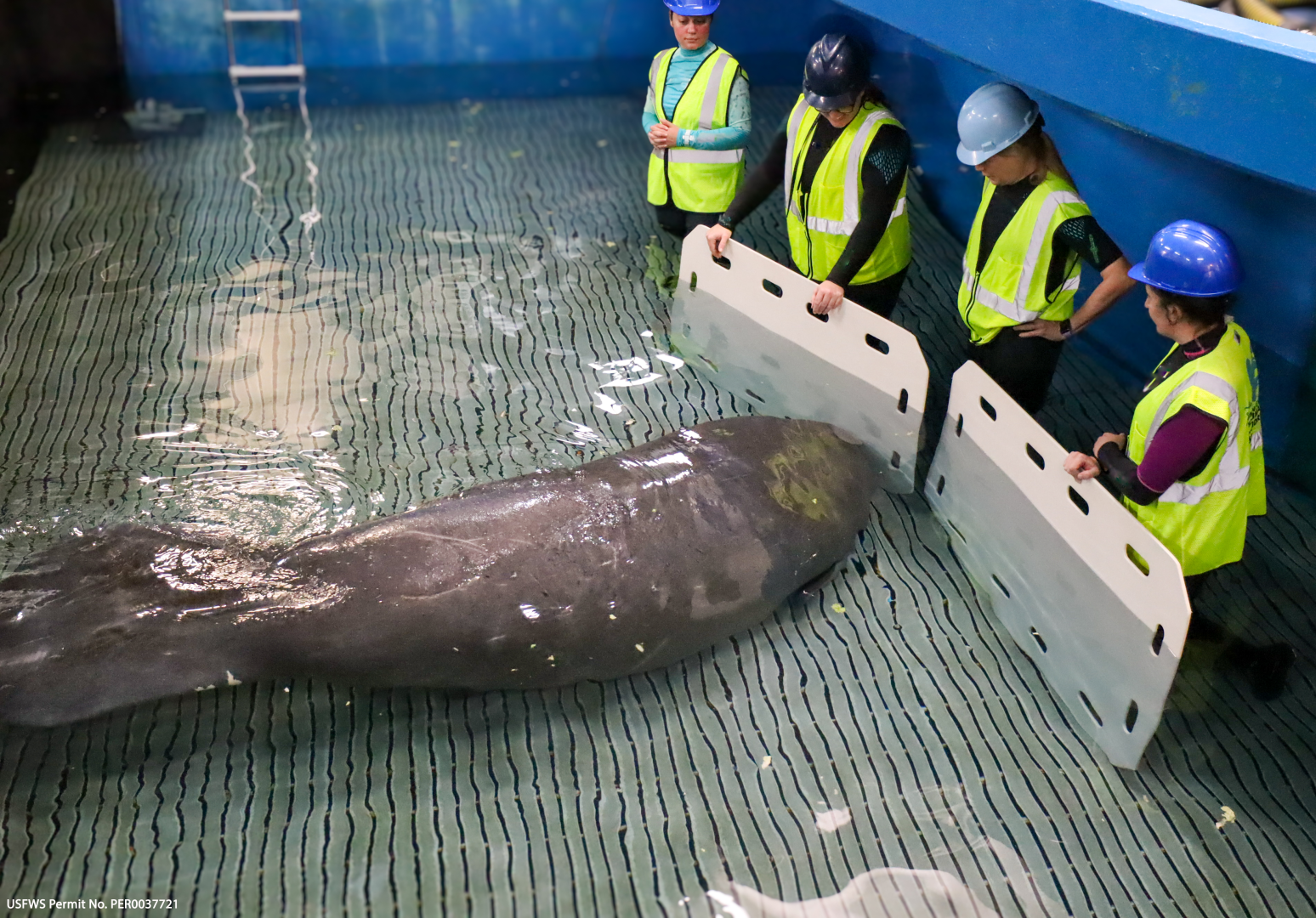
“Our role begins once critical and acute care has been completed. At that point, we may receive a stable manatee that simply needs some time to grow or gain weight before being released, typically during the winter months. In other cases, we provide specialized care and expertise to help the manatee recover,” explained Dr. Geoff, Disney’s Animal Health Director. “The hope is that no manatee remains with us for too long — usually no more than six to nine months. Our goal is to ensure they are healthy and strong enough for a successful release back into the wild during the winter periods.”
As part of this transition, two beloved manatees, Lil Joe and Inigo, who had been at The Seas with Nemo & Friends, were relocated to the Gulfarium in the Destin-Fort Walton Beach area.
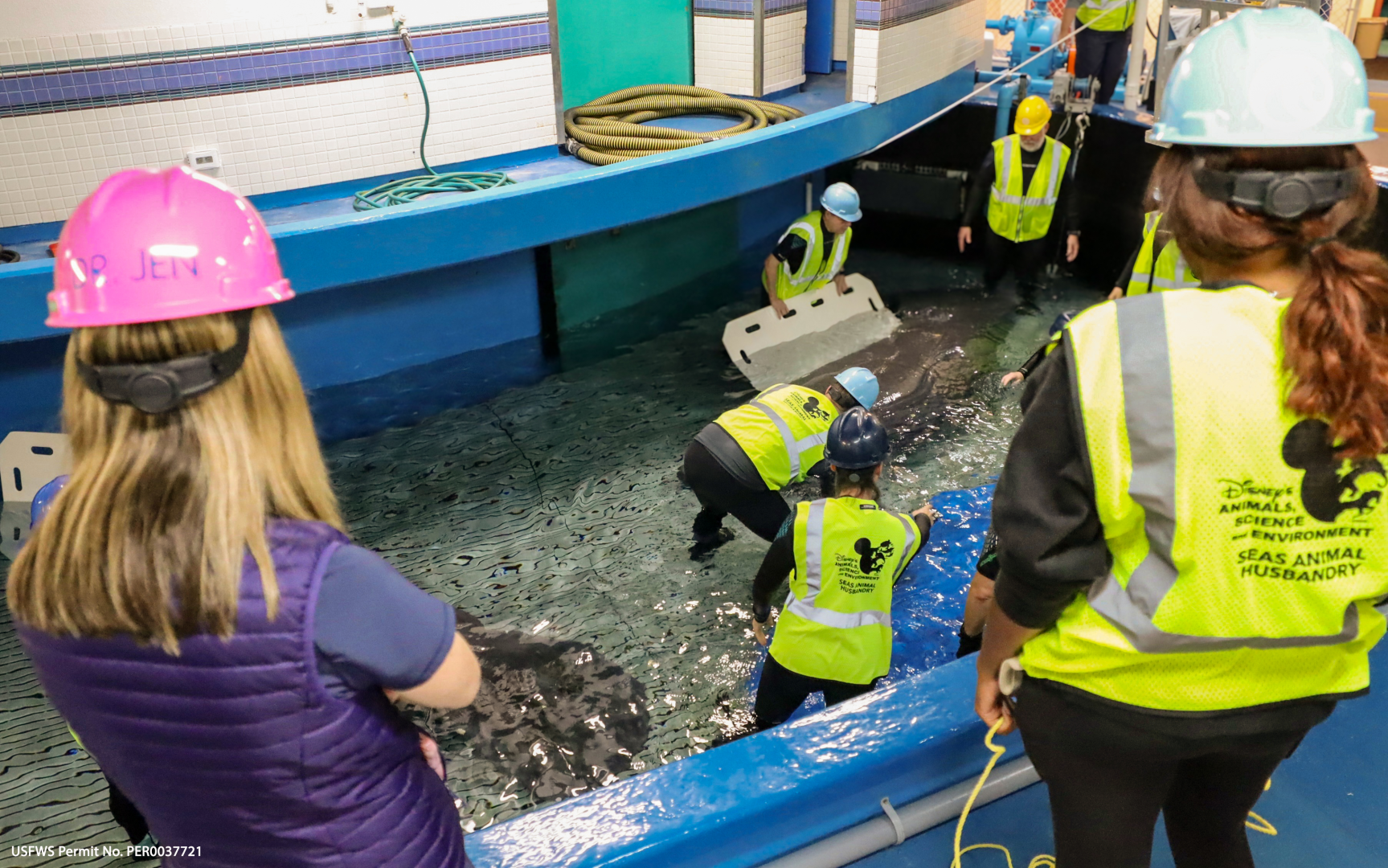
“We moved Lil Joe and Inigo to a new facility not long ago, and the transport went smoothly,” Dr. Jen said.
At The Seas with Nemo & Friends, Disney has created an optimal environment for manatee rehabilitation. The facility is equipped with several specialized features to aid in the rehabilitation process, including a medical lift floor that allows the animal health team to perform blood draws and radiographs, when needed. There’s also an on-site veterinary hospital at Disney’s Animal Kingdom, which is equipped with a CT machine that plays a crucial role in manatee care. In some cases, this technology is shared with other MPR partners who may need additional support.
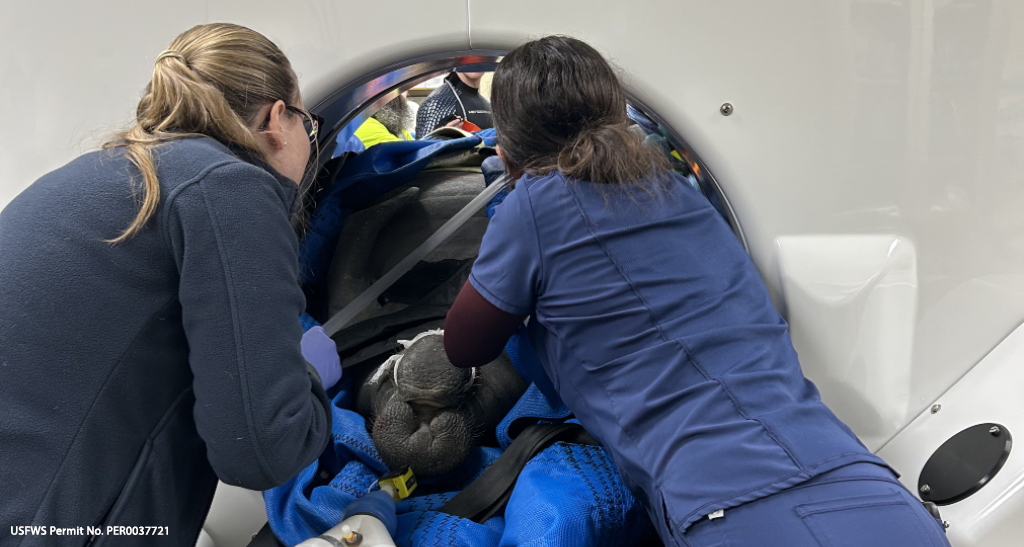
Beyond medical care, The Seas with Nemo & Friends also boasts an advanced water system, expertly managed by Disney’s Animals, Science and Environment’s Water Sciences team. This group of divers and chemists ensures the highest water quality, essential for the health and wellbeing of the animals living at Walt Disney World Resort.
Looking to the future, Disney’s work with the MRP and the FWS remains strong — ensuring future manatees receive the best care possible before being released back into the wild. Guests visiting The Seas with Nemo & Friends will likely see new faces more frequently, including more young juvenile manatees who need care.
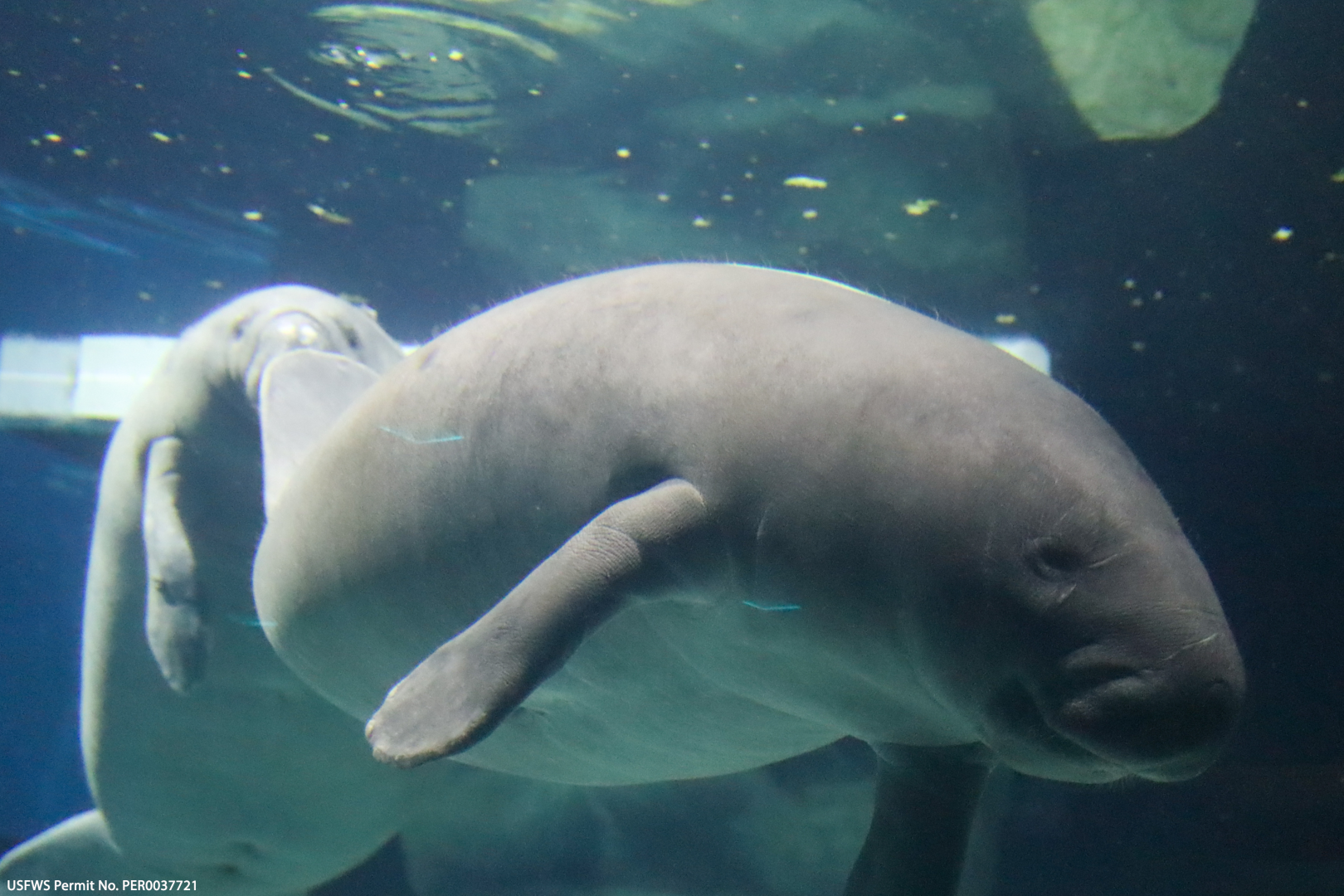
“In rehabilitation, success isn’t just about releasing animals — it’s about seeing them thrive once they’re back in the wild. That’s what I love about the manatee program: they track the animals long-term. With other species, you release them and often times you never know what happens next. But with manatees, we get to see, months later, that they’re still out there thriving. That’s the true measure of success for us,” Dr. Geoff concluded.
